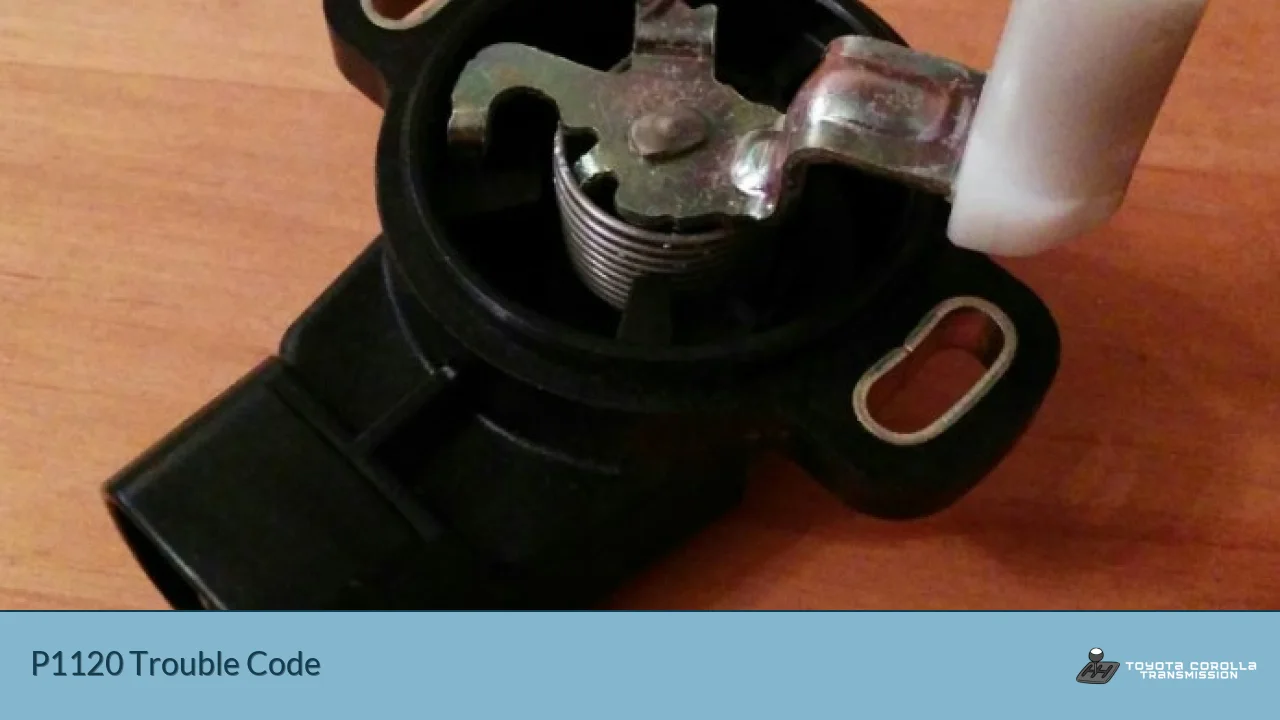The P1120 error code in Toyota vehicles indicates a malfunction in the Accelerator Pedal Position (APP) sensor circuit. This sensor plays a crucial role in modern engine management systems, providing vital information about the driver’s throttle input to the Engine Control Module (ECM). When this code appears, it often leads to reduced engine performance and can trigger limp mode as a safety measure.
| Aspect | Details | Possible Causes |
|---|---|---|
| Definition | APP sensor circuit malfunction | Wiring issues, faulty sensor, ECM problems |
| Symptoms | Reduced acceleration, limp mode, Check Engine Light | Intermittent or constant performance issues |
| Severity | Moderate to High | Can lead to significant drivability problems |
Understanding the APP Sensor
The Accelerator Pedal Position sensor is a critical component in drive-by-wire systems. It replaces the traditional throttle cable with an electronic signal, offering more precise control and better fuel efficiency. The sensor typically consists of two or more separate circuits for redundancy, ensuring accurate readings even if one circuit fails.
Function and Importance
The APP sensor translates the physical movement of the accelerator pedal into an electrical signal. This signal is then sent to the ECM, which uses this information to adjust fuel injection, ignition timing, and other parameters for optimal engine performance. The accuracy of this sensor is crucial for smooth acceleration and proper engine operation.
Common Causes of P1120 Code
Several factors can trigger the P1120 code:
- Wiring Issues: Damaged, corroded, or loose connections in the APP sensor circuit.
- Faulty APP Sensor: The sensor itself may be defective or worn out.
- ECM Problems: In rare cases, the Engine Control Module might be misinterpreting signals.
- Voltage Irregularities: Inconsistent voltage supply to the sensor can cause erratic readings.
Diagnosing the Problem
Proper diagnosis is essential to address the P1120 code effectively. Here’s a step-by-step approach:
Visual Inspection
Start with a thorough visual inspection of the APP sensor and its wiring harness. Look for signs of physical damage, corrosion, or loose connections. Often, simple wiring issues can be the root cause of this error code.
Using Diagnostic Tools
Employ an OBD-II scanner to read live data from the APP sensor. Compare the readings with the manufacturer’s specifications. Any significant deviation from the expected values could indicate a problem with the sensor or its circuit.
Voltage Testing
Use a multimeter to check the voltage output of the APP sensor at different pedal positions. The voltage should change smoothly as the pedal is depressed and released. Erratic or no voltage changes are clear indicators of a faulty sensor or wiring issue.
Fixing the P1120 Code
Once the root cause is identified, the following steps can be taken to resolve the issue:
- Repair or Replace Wiring: If damaged wiring is found, repair or replace the affected sections.
- Clean Connections: Remove corrosion and ensure all connections are secure.
- Replace APP Sensor: If the sensor is faulty, replace it with a new, compatible unit.
- ECM Recalibration: In some cases, the ECM may need to be recalibrated or updated.
It’s important to note that after any repairs, the vehicle should be thoroughly tested to ensure the problem is resolved and no other issues have arisen.
Preventing Future Occurrences
Regular maintenance and prompt attention to any performance issues can help prevent the P1120 code from recurring. Keep an eye out for early warning signs like hesitation during acceleration or irregular idle behavior.
FAQs
What does the P1120 code mean for my Toyota?
It indicates a problem with the Accelerator Pedal Position sensor circuit, potentially affecting engine performance and drivability.
Can I still drive with a P1120 code?
While possible, it’s not recommended as it may lead to reduced performance or unexpected behavior. Seek repairs promptly.
How much does it cost to fix a P1120 code?
Costs vary depending on the cause, ranging from $100 for simple wiring repairs to $500+ for sensor replacement and diagnostics.
Is the P1120 code serious?
Yes, it can significantly impact vehicle performance and should be addressed as soon as possible to prevent further issues.
Can I fix the P1120 code myself?
While some causes like loose connections can be DIY-fixed, professional diagnosis is recommended due to the complexity of modern vehicle electronics.

